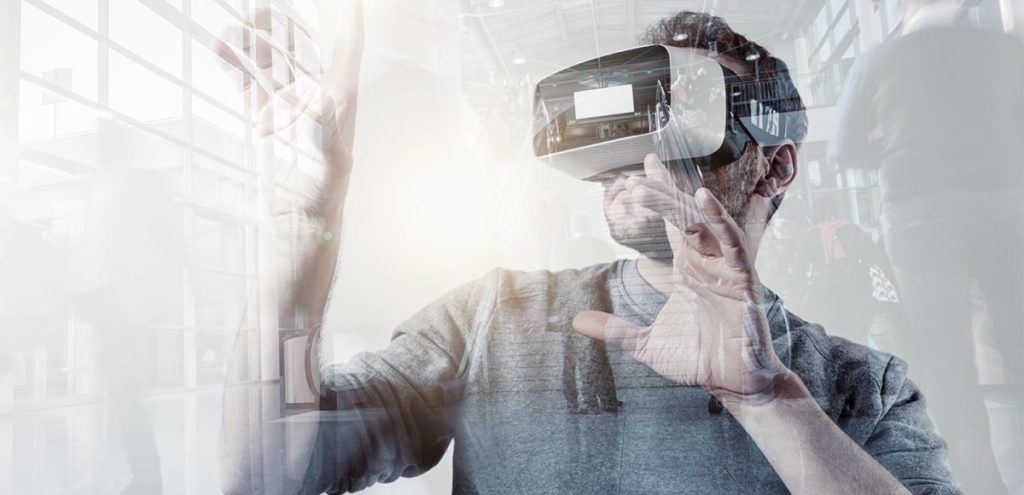Articles
Your one stop shop for all your health & safety resources
Virtual Reality Training in Occupational Safety and Health
Virtual Reality (VR) combines 3D headsets with computer modelling to give the person wearing the headset the impression that they have entered a completely different reality. Uses include games in which the user encounters mythical beasts and alien fighters – but they also include real-life situations, and it is in real life situations that they are useful for safety training. They make it possible for staff to be trained in the safe use of equipment so that they learn in safe conditions what to do and how to do it before they encounter the same equipment in conditions that could be dangerous. VR works – but there are drawbacks as well as advantages.

Embodied Cognition
This fancy expression describes something very simple – the body’s ability to “feel” something more fully when it has experienced it in a practical way. It’s possible to teach the use of, for example, a power saw by showing trainee operators a video of the saw being used by an experienced sawyer. Usually, a voice overhead will describe what is happening on the screen. And that’s fine, to a certain extent – if the trainee has been paying attention, s/he “knows” how to use the equipment. But that is not the same level of knowledge as someone possesses after they have used the equipment live. VR produces better results than training films because the body learns how it feels to do the work. That learning process comes from immersion in a virtual world that seems exactly like the physical world.
The pros
- Studies in America and China have shown that VR produces higher levels of recollection than other forms of training. Simply put, after VR people remember more of what they have been taught than after other forms of training. In the context of safety training, they come face-to-face with, and learn to recognise, potential dangers before they face them in real life
- It’s possible, using well-constructed VR scenarios, to train people in potentially high risk activities and on high risk equipment so that they have a full command of the work before actually being exposed to the risks on site
- VR scenarios can be developed that help trainees to recognise hazards that would not otherwise be noticed until they had turned from an accident waiting to happen into an actual accident
- The most effective training is on-the-job training and VR allows on-the-job training without on-the-job risks
The Cons
- When constructing VR training scenarios, the accent tends to be on the “real life” situation being constructed – but it is also necessary to bear in mind the real-life situation that actually exists. When someone is wearing a VR headset, they can see the world the headset portrays. What they can’t see is the physical world outside the headset. It’s important to make sure there are no items of furniture or equipment they can bump into while moving around the virtual world and no holes they can fall into
- The construction of a VR training scenario requires accuracy. These are computers we are dealing with and they suffer from the same problem any computer suffers from – if the programmer doesn’t tell the computer that a hazard exists, the training will not prepare the trainee to deal with or avoid it

Whether it’s being used to eliminate risk, increase information retention, or support safety behavior change, it is critical that the technology is mapped out wisely before being implemented. Involvement and support of seasoned health and safety practitioners in the initial scripting and design process is often key.
It is likely that we will see future adoption as more and more groups look to use immersive technologies in meaningful ways to improve learning outcomes. It will be interesting to see which groups develop the most useful case studies that will transform the way we train our workforces in the future.

Learn more about how VR can benefit your organization by visiting us here:
Submit form
+ Training
+ Consulting
+ Support Services
+ Professional Development
Let us know which service you are interested in:
Please complete the form below and a member of our team will be in touch within 1-3 business days
Thank you for your interest in Demoura Lawson Consulting
Contact Us
Qatar: Unit Office No. 1905: 19th Floor, The E18hteen Tower , Bldg 230, Street 303, Zone 69, Lusail Marina , Qatar
Tel: +974 4445 9206
Saudi Arabia: 3121 Imam Abdullah Bin Saud Bin Abdulaziz Road, Ishbiliyah, Riyadh 13225, Saudi Arabia
Tel: +966 50 685 6910
ADD A COMMENT
March 24, 2022